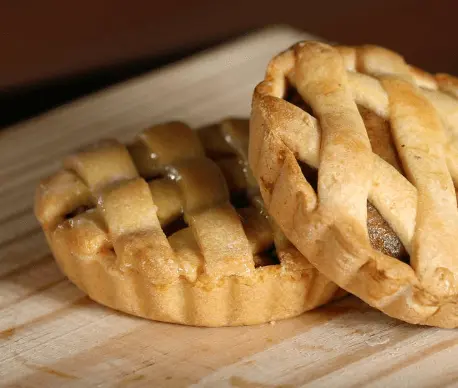A gluten-free diet plan is a nutritional diet plan that excludes gluten-containing food from your diet completely. This diet is recommended for people with celiac disease. Individuals who are gluten sensitive are advised to follow this diet.
If you feel any discomfort after consuming gluten, you could be intolerant to gluten. It is necessary to know your intolerances and allergies before you start a new diet. Not only gluten, but any food that you are sensitive to can cause discomfort as well as other systemic conditions.
To follow a gluten-free diet, you are supposed to eliminate wheat, barley and rye. This diet has become popular even amongst people without any proven intolerances to gluten as it comes with numerous health benefits.
Are you planning on going gluten-free in your diet? It is common to have multiple questions before you start something new. This article provides you with all the information you need starting from what gluten is and its health benefits to what delicious food you can enjoy.
What is gluten?
Gluten is a group of proteins that are present in wheat, barley and rye. Gluten makes the dough have a sticky consistency when combined with water.
People who feel discomfort after eating gluten are probably intolerant to gluten and might have other health conditions. It is essential to consult a doctor as this intolerance can lead to severe health hazards.
What is the purpose of a gluten-free diet?

Most people do not show any side effects after consuming gluten. But if you are experiencing any sort of trouble and see any signs, it is time to get tested for celiac disease.
There are certain health conditions and allergies associated with gluten intolerance other than celiac disease. You could be allergic to wheat or have non-celiac gluten sensitivity. Gluten ataxia is also a common condition associated with this discomfort.
By following a gluten-free diet, it becomes easy to manage any signs of health conditions associated with gluten.
Non-celiac gluten insensitivity
People with non-celiac gluten sensitivity feel discomfort after consuming gluten but test negative for wheat allergy and celiac disease. They experience symptoms similar to celiac disease such as bloating, rash, stomach pain, diarrhoea or constipation and tiredness.
Though there is still some disagreement about this sensitivity, some studies prove that this sensitivity exists. Also, there is no damage seen to the gut wall.
Celiac disease
Celiac disease is an autoimmune disorder. The body perceives gluten as a foreign body and attacks it. This leads to the damaging to the intestinal wall.
As the gut wall gets damaged, it becomes difficult to absorb the nutrients from the intestine. Therefore, patients with celiac disease are often seen with multiple deficiencies, anaemia and other digestive issues.
It is hard to diagnose the celiac disease as it has symptoms that are very common in various medical conditions. Some of the symptoms that these people experience are anaemia, stomach pain, diarrhoea or constipation, rashes, weight loss and depression. They experience bloating very commonly.

To test if you have celiac disease, you can go for a blood test or a biopsy from the intestine. Moreover, it is of utmost importance to consult with your doctor before going gluten-free in your diet (even when you do not have any gluten-related issues).
Wheat allergy
Many people experience common food allergies like milk, peanuts, soy and many more. Like any other food allergy, wheat is considered a foreign antigen by the body’s immune system. It triggers an immune response by releasing antibodies to the wheat proteins.
This allergic response leads to many symptoms, including breathing difficulties and congestion.
Gluten ataxia
Gluten ataxia is an autoimmune disease. This is triggered by consuming gluten-containing foods. This condition is associated with muscle problems.
Foods that can be consumed
When you are on a gluten-free diet, it is important to be careful regarding your food choices and the ingredients found in them. A gluten-free diet is one of the diets anyone can follow as there are plenty of delicious as well as healthy options.
Below are some of the completely gluten-free food options:
Fruits and vegetables: No fruit or vegetable contains gluten.
Dairy: Unflavoured dairy products are free of gluten. You can consume plain milk and yoghurt. If you are someone who loves cheese, you don’t have to eliminate it from your diet.
It is essential to be sure and check the food label before consuming flavoured dairy products as most of them have gluten-containing ingredients.
Eggs: all sorts of eggs can be consumed.
All unprocessed nuts and seeds are gluten-free.
Fish and meat: all kinds of fish and meat are found to be free of gluten. Nevertheless, battered or processed meat and fish must be avoided.
Flour, starches and grains that can be included in a gluten-free diet plan are:
- Quinoa
- Rice
- Soy
- Amaranth
- Potatoes
- Buckwheat
- Corn
- Rice flour
- Corn flour
- Bean flour
- Potato flour
- Coconut flour
All kinds of herbs and spices are gluten-free. If you are wondering what oils and spreads to use, you can go with any vegetable oil and butter. Oats when labelled as gluten-free can be added to the diet.
Most of the beverages are free of gluten. Beers, unless mentioned to be gluten-free cannot be consumed. When you are following a gluten-free diet, it is important to look for gluten-free labels before buying processed foods.
Foods to avoid
Gluten being one of the most common constituents of ingredients that are usually added to foods, it is difficult to avoid gluten completely. The best possible way to avoid gluten is to shift to “one ingredient” foods and include whole foods into your diet.
It is mandatory to avoid all kinds of foods and drinks which contain gluten. Wheat, malt, barley, rye, triticale and brewers yeast are the usual sources of gluten which are used extensively in the preparation of many foods. Any food prepared from these or containing any amount of these should be avoided.

Gluten-containing processed foods
Many processed foods usually have ingredients which contain gluten. Below is the list of processed food products which contain gluten.
- Bread and pasta: whole wheat bread and pasta are not free of gluten.
- Cereals: cereal is one of the popular breakfast foods. Many processed kinds of cereal contain gluten. They can not be consumed unless labelled gluten-free.
- Baked foods such as cakes, pastries, cookies, and pizzas are made of ingredients containing gluten.
- Soups and salad dressings are also to be avoided as wheat is commonly used as a thickening agent.
- Sauces like soy sauce, marinades and teriyaki sauce must be eliminated from your diet.
- Beer is usually made from wheat or barley.
Candies, chips which are flavoured, roasted nuts, flavoured popcorn and crackers may be very tempting but all these contain gluten. It is very challenging to let go of these delicious things but a gluten-free diet comes with various health benefits.
A few things to keep in mind when you are sensitive to gluten (particularly those with celiac disease) are to store gluten-containing and gluten-free foods separately and use different utensils as well to avoid cross-contamination. If you are planning on eating out at a restaurant, be sure to check the menu beforehand.
Health benefits
A gluten-free diet is very essential for people with gluten insensitivity, especially for those with celiac disease. Not only for people who have related issues but for everyone who follows this diet is seen to reap few benefits from it.
Reduces chronic inflammation
In patients with celiac disease, a gluten-free diet helps reduce inflammation that lasts for days, months or sometimes years also. It is proven that this diet heals the damage caused to the gut wall.
Weight loss
Weight loss may be a surprise benefit of this diet. By following a gluten-free diet, you will lose weight as this diet requires you to eliminate most of the junk food that you usually consume. These unnecessary junk calories are replaced by healthy nutrient-rich foods.
If your main aim is losing weight, do not consume processed food that is labelled as gluten-free. It will only add unwanted calories but does not do any good to your health.
Boosts energy
As we have seen, individuals with celiac disease often experience tiredness and “brain fog”. This is said to be caused due to the damage to the gut wall leading to deficiencies. By going gluten-free, you are preventing your gut from being damaged and therefore you notice elevated energy levels.
Apart from these specific advantages, a gluten-free diet treats many digestion-related issues. It reduces symptoms like diarrhoea, constipation and bloating.
Negative effects
A gluten-free diet has a few drawbacks. It comes with some negative effects despite having many advantages. There’s a risk of nutritional deficiencies in people with celiac disease.
One of the downsides of this diet is that it can lead to constipation. Eating foods rich in fibre can prevent this. Following this diet may be difficult with a restricted budget as it is expensive. As we know, most social events are associated with food. This diet may either restrict you from attending those events to stick to the diet or you may need to bring your food.
Conclusion
Many people do not experience any side effects after consuming gluten. Nonetheless, people with gluten-associated allergies and celiac disease need to avoid food with gluten. Despite being restrictive, there are numerous health benefits and it also helps you reduce your digestive symptoms.
If you are willing to follow this diet, it might feel challenging but planning your meals ahead of time will make it easier. Prepare a daily meal plan for a week to make it less complicated. Be sure to consult a dietitian or a doctor before you start any diet.
